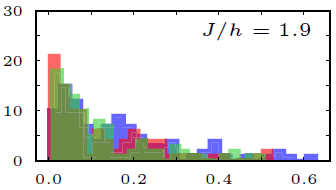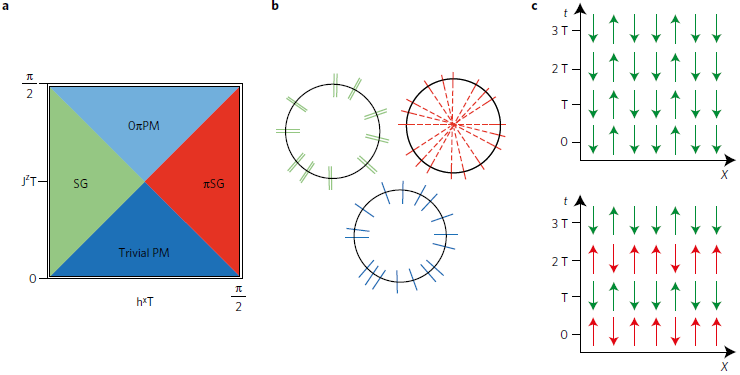
Eigenstate order
Eigenstate order
Phases of quantum many-body systems are conventionally described in terms of their thermodynamic properties. Recent developments suggest that it is suitable in a more general context to extend the characterization of quantum many-body systems beyond this thermodynamic equilibrium paradigm to the level of single eigenstates. The associated eigenstate phases are protected by nonergodicity where systems fail to approach thermodynamic states under their dynamics. This opens up the possibility for new kinds of order in quantum real-time evolution, although respective thermodynamic states are completely featureless. A prominent example in this direction has become the so-called $\pi$-spin glass phase also named discrete time crystal, which has been discovered at our institute. Contrary to conventional phases these time crystals display not only spatial but rather spatio-temporal order with a time-dependent order parameter.
In the condensed matter division of our institute we study the mechanisms for the underlying ergodicity breaking, explore the possibilities for new dynamical eigenstate phases, and develop techniques for the challenging theoretical description of such nonequilibrium systems. For more details on current and recent research highlights see the collection below.


